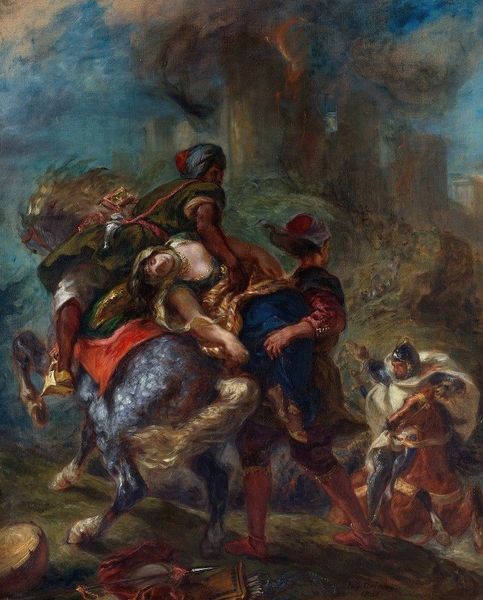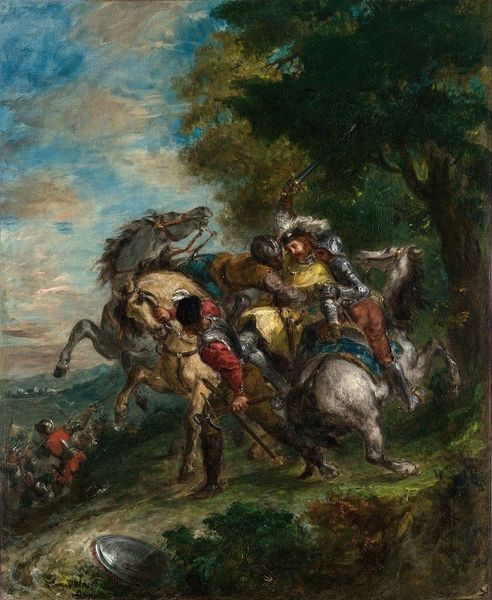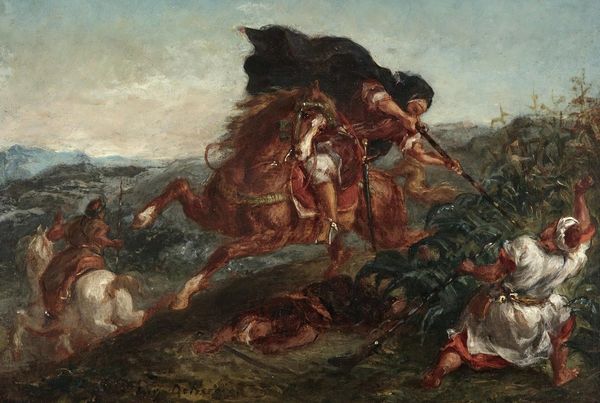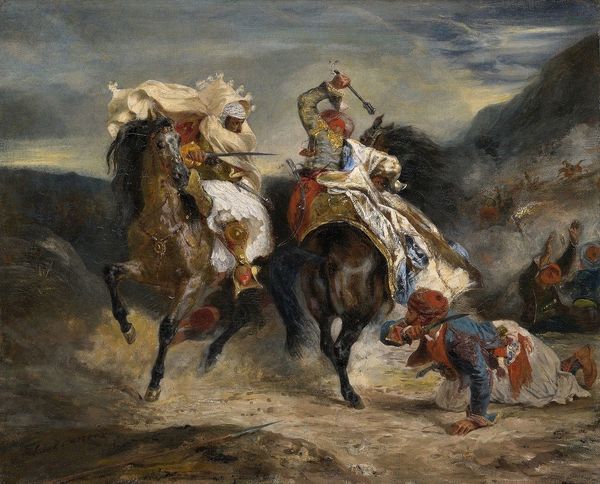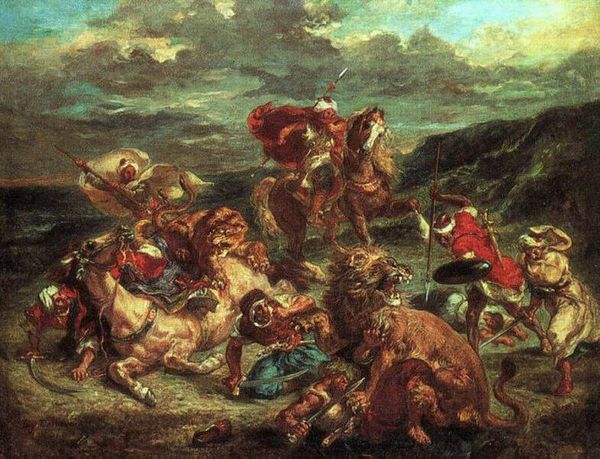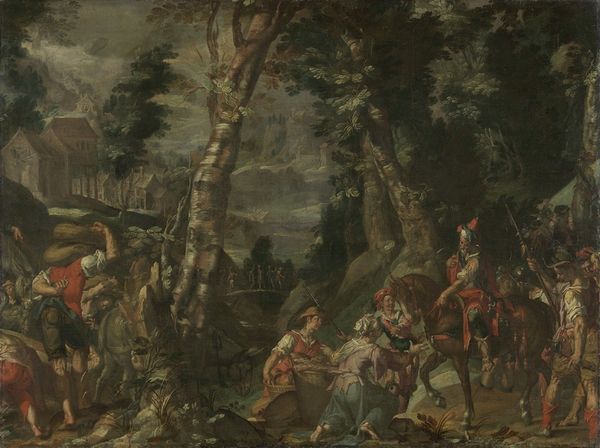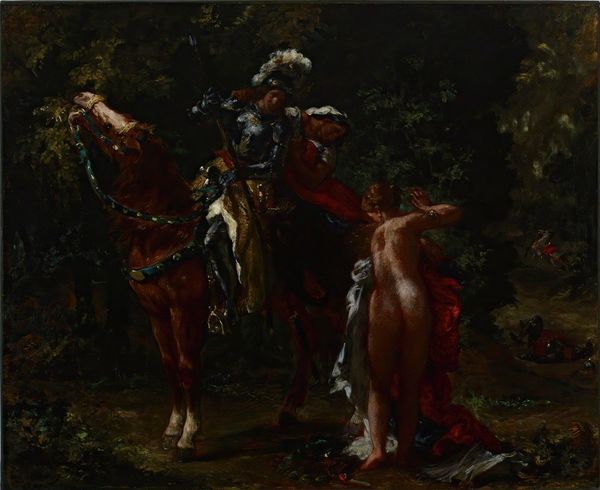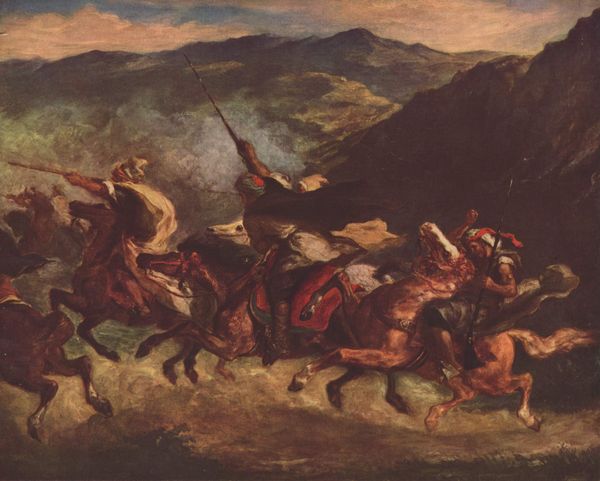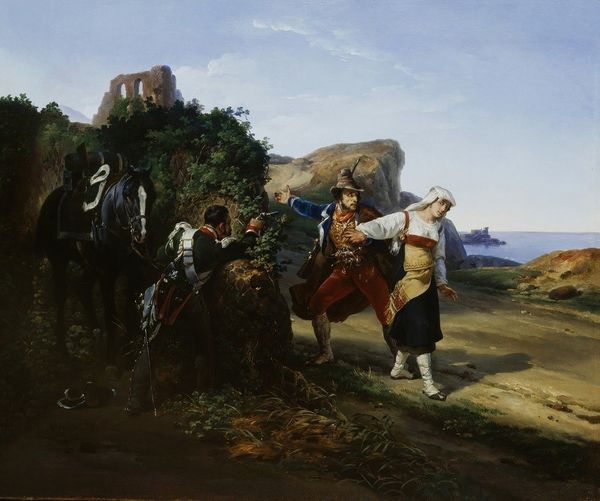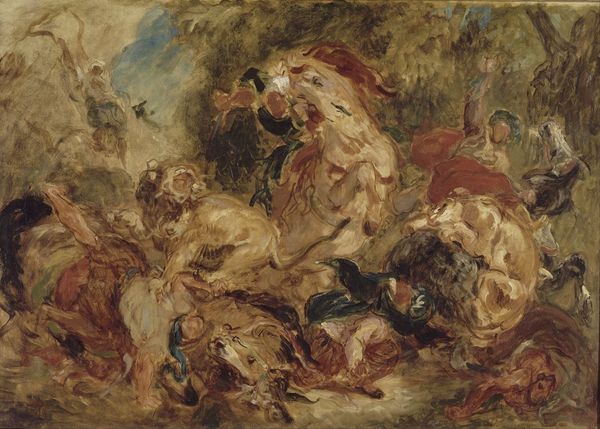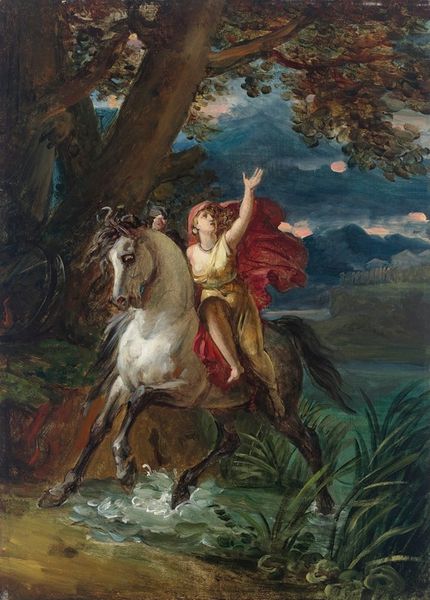
Copyright: Public Domain: Artvee
Editor: Here we have Eugène Delacroix's "Angelica and the Wounded Medoro," created around 1860 using oil paint. The scene feels so dynamic, like a whirlwind of figures in a landscape. What story is the materiality and production telling us? Curator: Delacroix’s romantic sensibilities clearly drove him to this specific subject. What’s fascinating to me is the actual labor of creating this image; think about the pigment sources available to him at this time. Consider the societal context in which a patron would want to display mythological subject matter rendered through such vigorous brushwork. Where does that patron fit into the social order? Editor: I see what you mean! Knowing the social status and potential material limitations makes it richer. Is the hurried feel a product of time, material costs or something else? Curator: Precisely! Consider the economic realities tied to the commission of history painting during this period. Who could afford Delacroix's paintings? Was he using inexpensive or precious pigments, and how would this relate to the patron’s ambitions and tastes? Delacroix also pushes boundaries between craft and fine art here; is it fully resolved as a history painting in the traditional sense? Or something else? Editor: That is an interesting thought. Knowing about the material and potential production conditions definitely gives the art another voice. Curator: Indeed. Analyzing art through its production reveals not only aesthetic choices but economic and social dynamics. A focus on materiality, manufacture, consumption allows us a more profound interpretation.
Comments
No comments
Be the first to comment and join the conversation on the ultimate creative platform.
